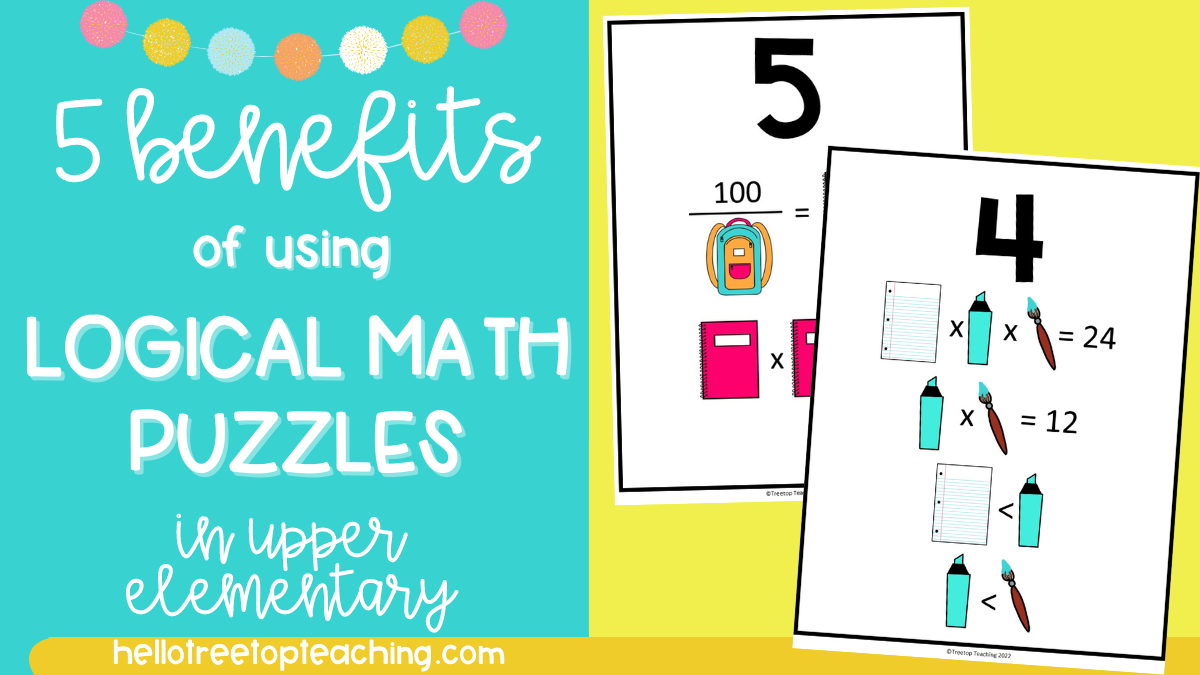I first came across logical math puzzles using pictures from our math curriculum when it was the warm-up one day. I was floored at how motivated and excited the students were to try to solve this puzzle. I watched them use their math facts, recall all the properties that we have learned, solve for a variable in an equation, and check their work methodically until they got the right answer. The conversation about strategies felt so authentic and genuine.
After seeing that, I knew that I had to start introducing this sort of activity more frequently. So I created a series of math picture puzzles in multiple different levels. Students can work on them throughout the month or all in one sitting.
Using Logical Math Puzzles in the Classroom
Where to Start

When I first introduced these to my students I like to use an easier set of puzzles where the values of each symbol remain the same over several different activities. This gives them a chance to build their understanding of variables In lots of different ways in perspective. Each of the sets contains five different worksheets each with a different activity on it that uses the math puzzle pictures. You could use this all in one school week if you want to intensely work on this skill. You could also spread it out throughout the month. It made an excellent math center rotation and morning work option.
Increasing the Difficulty
Then I will pump them up to the more difficult ones where each puzzle requires a different value for each symbol. These can still be very tricky for students. You may need to scaffold this step by giving them the value of one of the symbols and having them figure out the rest. I started by putting them up on our board and asking students for different strategies and things they noticed, working on these math picture puzzles as a whole group. Then I slowly relinquished the problem solving two groups and then individual students.

I also started to use the cards that included exponents (included in the set), a relatively new skill to 5th graders, as a way to increase the difficulty for those who were ready. This was an easy way to differentiate!
Different Logical Math Puzzle Formats
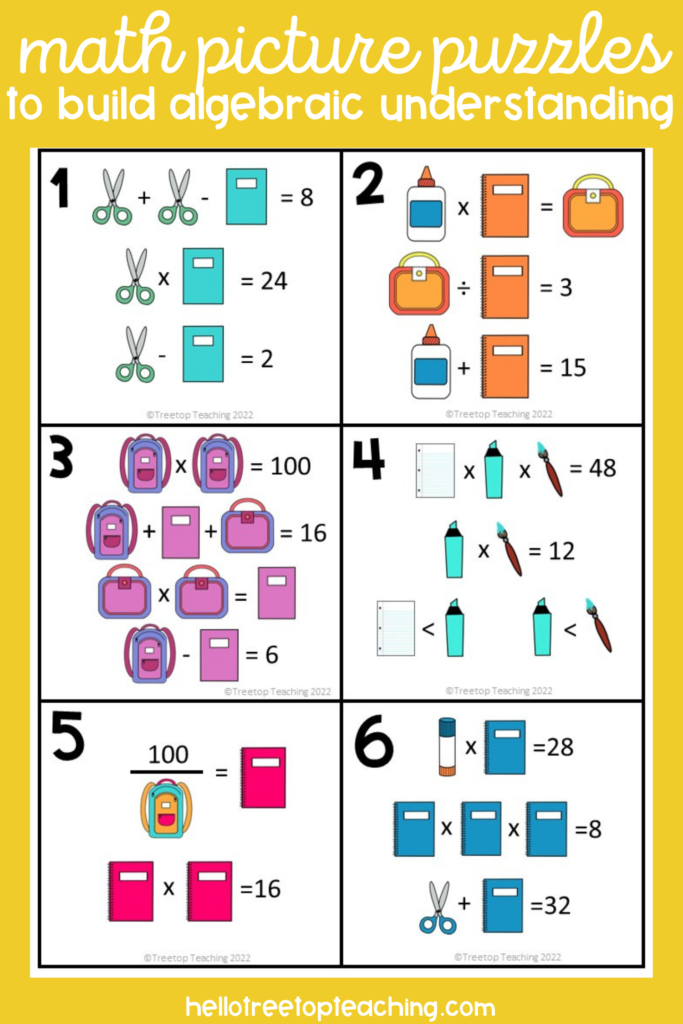
I used the task cards with my students the most. The most common way was by laminating them and taping the them around the room and having the students do a task card scoot to solve the different puzzles. I keep the sets organized in these so that I don’t have to prep this activity in the future!
As the students got better, I started taping a task card to the corner of their desk. The students could solve it when they got an extra moment or when they finish something early. They just brought me the task card and told me the answer. If they got it correct they received a dollar of our classroom cash, and then I replaced the task card with a new puzzle for the next day.
There are also full page and half page versions of the each puzzle so that you can decide what format works best in your room.
Benefits of Using Logical Math Puzzles with Pictures
Improve and Utilize Math Facts
Because these math logic puzzles use the basic math operations, students are required to know their math facts. They don’t have to have them memorized. They could have a multiplication chart out with them while working. However, I find that they are more motivated to memorize their math facts when they know they’re going to have to use them for an activity.
It also allows students to step back and look at these math facts from a new perspective. For example, they often know that adding the same number 3 times is the same as multiplication. But they will see that firsthand in these puzzles. All of those properties and rules of math that we have taught them, become tools in their tool belt to solve these puzzles correctly. It’s giving them an authentic chance to practice and implement these things that they’ve learned.
Building Early Algebraic Understanding
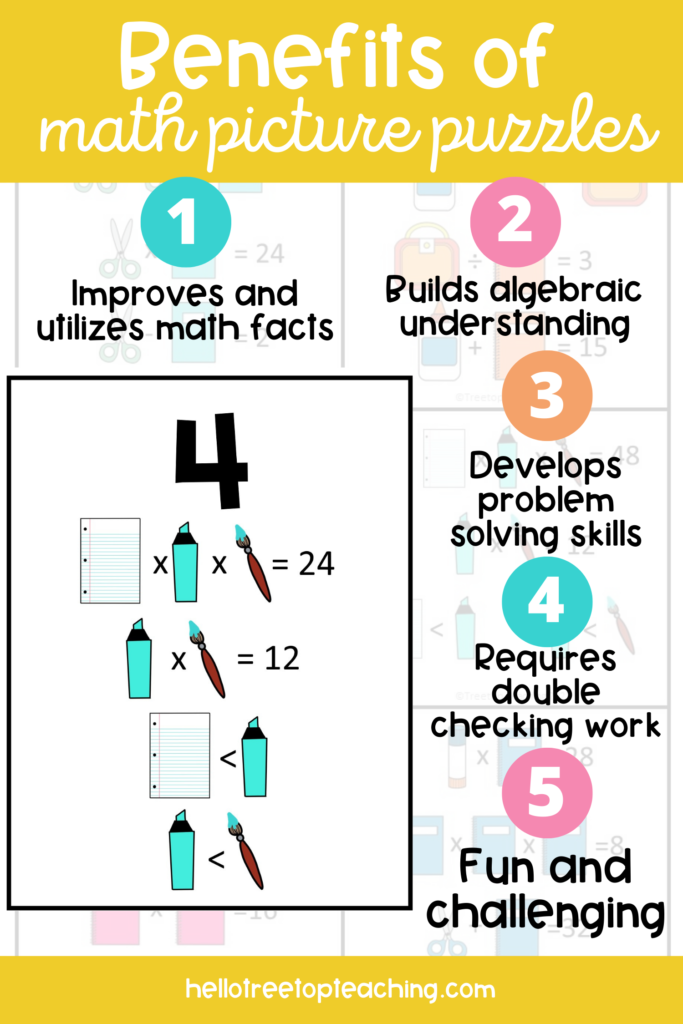
One of the biggest benefits of these logical math puzzles is building algebraic understanding of variables from a young age. As someone who has taught middle school math and pre-algebra, I know how important building this sort of thinking from the beginning. You are doing their teachers a great service later on by having your students solve for unknown numbers in different equations.
They do not have to have any formal algebra or pre-algebra understanding of using inverse operations. But later when these things are named and taught specifically, they will have a basis already formed in their understanding that that teacher can pull from.
Developing Problem Solving Skills
Like many different activities in math, we are working to develop problem-solving skills. What I love about these puzzles is that there are so many different strategies that students come up with. Allowing them to work in partners or groups is excellent for this activity. It allows them to learn from one another as they attempt to figure out the missing values.
There is also a serious level of perseverance that has to happen with these logical math puzzles. There isn’t a certain formula or a way that is going to work for every puzzle. They are all different. Some of them just come more easily to certain students. And others really stumped them. I find that having different levels of these sort of activities is really important as you’re introducing this to your students.
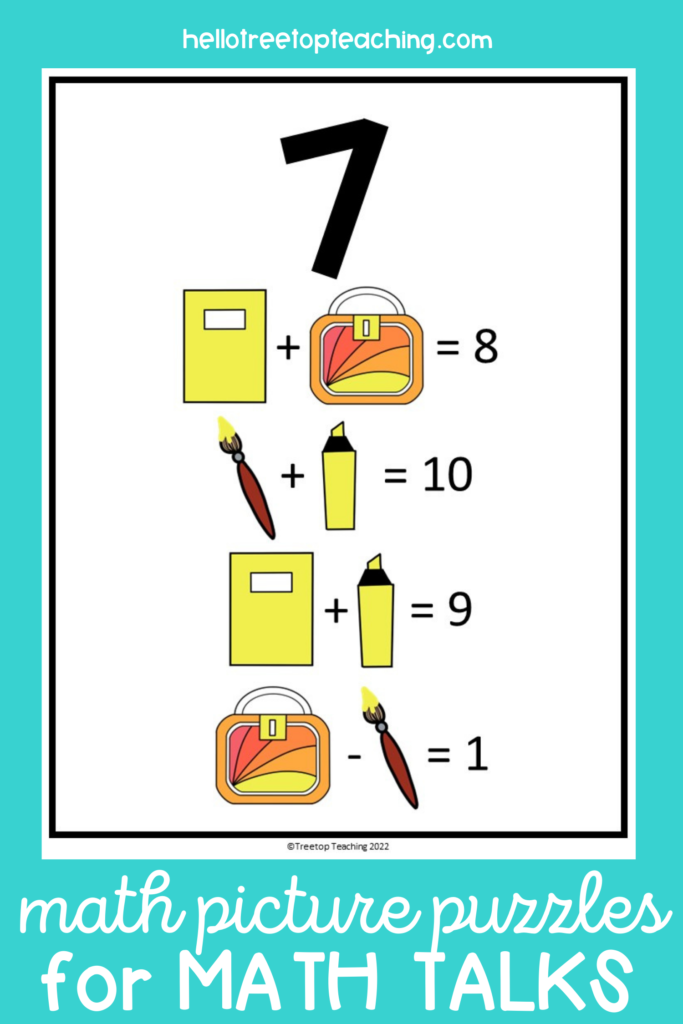
Reinforces Checking Their Work
I feel like I’m a broken record half the time telling my students to check their work in math. These puzzles require students to constantly be checking their work. They have to go back and substitute in to see if there answers make sense.
I have also further encouraged them to check their work by giving them a certain number of lives. For every incorrect answer that they bring me to check, I take away a life. These logical math puzzles should be very easy for them to plug in and check. So there is no reason that they should lose any lives.
Fun AND Challenging
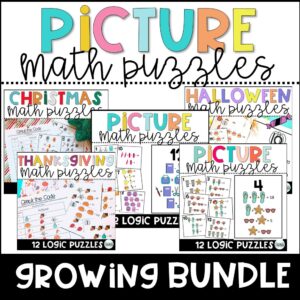
The logical math puzzles strike a perfect balance in both fun and challenge. They allow students to wrestle with something that requires out-of-the-box thinking. It feels much lower stress than a math worksheet on properties or solving for unknowns.
Finding an activity that is both fun and challenging can be difficult when it comes to upper elementary and middle school students. If the activity is too difficult, many of them will just give up. If the activity doesn’t have some allure of fun, many of them won’t give it their best shot from the very beginning. This is a delicate balance especially as the material that we have to cover in math increases in difficulty overall.

